Numbers Class 1 Notes Maths Chapter 11
Introduction
- Imagine you have a bunch of toys. How do you know how many you have? You count them—1, 2, 3, 4, 5! Counting helps us know how many things are around us.
- We count everything—apples in a basket, steps we take, balloons at a party, and stars in the sky! Numbers help us keep track of things, compare groups, and even solve puzzles.
- Let’s explore counting and see how numbers help us in everyday life!

Let's Understand the Number Ten
- Soniya and Pratham are neighbours.
- Pratham’s house number is 9 and Soniya’s house number is 10.
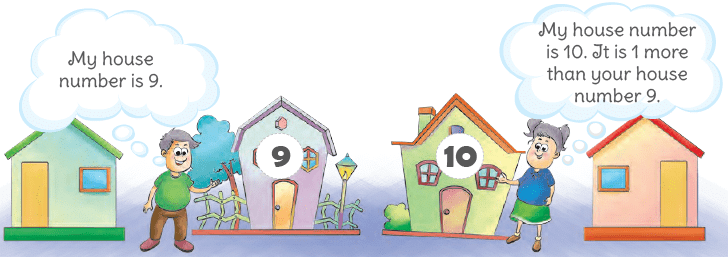 Now, observe the following to understand the number 10 better.
Now, observe the following to understand the number 10 better.

10 is read as ten.
- Digits 0, 1, 2, 3, 4, 5, 6, 7, 8 and 9 stand-alone. So, they occupy only one place when written.
- Number 10 is made up of the digits 1 and 0. So, two places are needed to write 10.
0 is written in Ones Place and 1 is written in a new place on the left of the Ones Place.
This new place is called the Tens Place. - Positions of 1 and 0 are fixed in the number 10.
Edurev Tips: 1, 2, 3, 4, 5, 6, 7, 8 and 9 are 1-digit numbers. 10 is the first 2-digit number.
10 ones make 1 ten


Making 10 with Number Pairs
Let’s play a finger-counting game! Hold up all 10 fingers—that’s 10 in total! Now, what happens if you fold some down?
- If you fold 5 fingers, how many are still up? 5! So, 5 + 5 = 10.
- If you fold 4 fingers, how many stay up? 6! That means 6 + 4 = 10.
- What if you fold 2 fingers? You still have 8 up, so 8 + 2 = 10!
There are so many ways to make 10 using two numbers!
Question: Look at the images and write down the number pairs of 10.
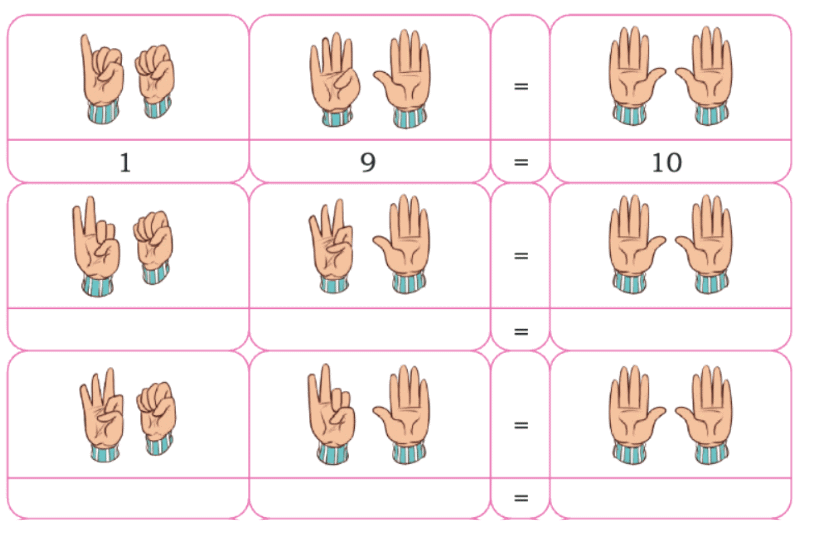
Ans:
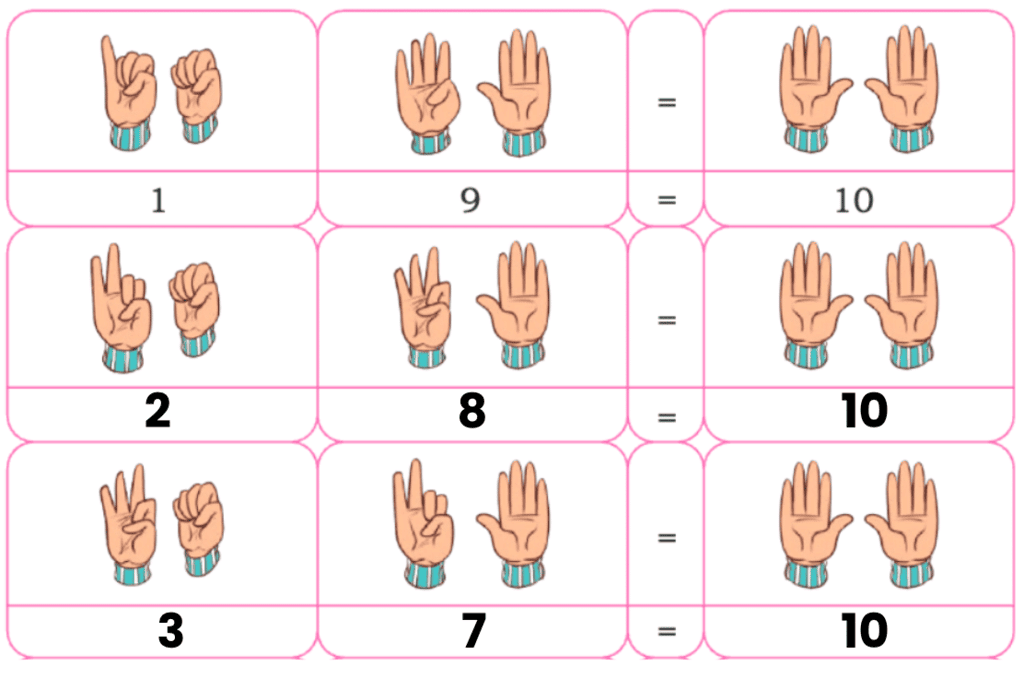
Let's learn about Numbers from 11 to 20
- The numbers from 11 to 19 are composed of one ten and one, two, three, four, five, six, seven, eight or nine ones respectively.
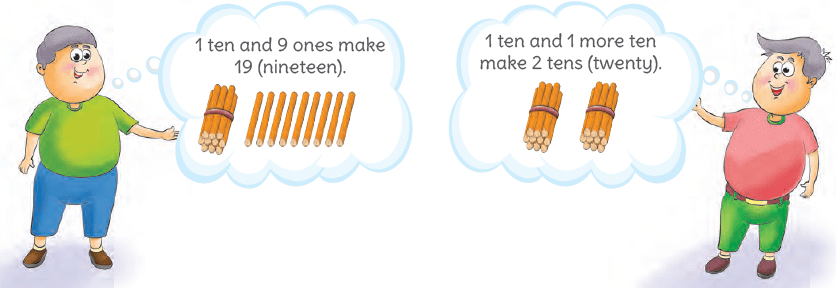
Edurev Tips: Number twenty is composed of 2 tens.
- Observe the following to understand the numbers from 11 to 20.
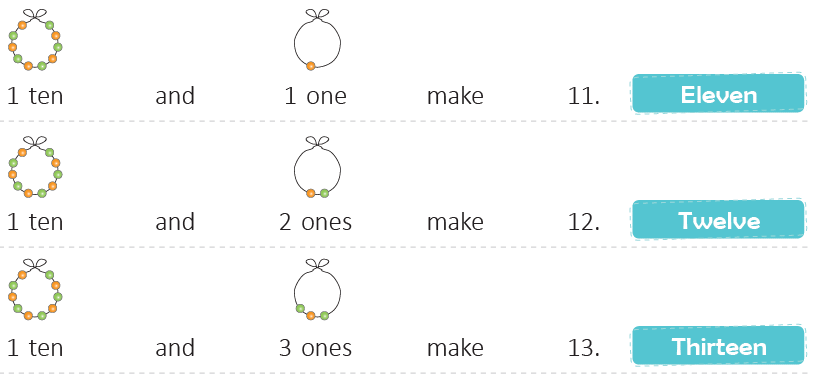
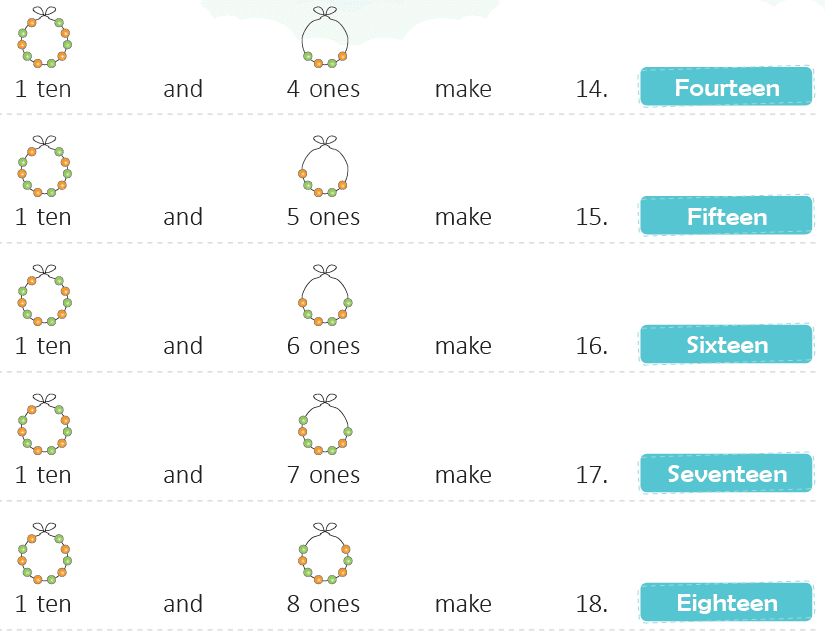

- To sum up:
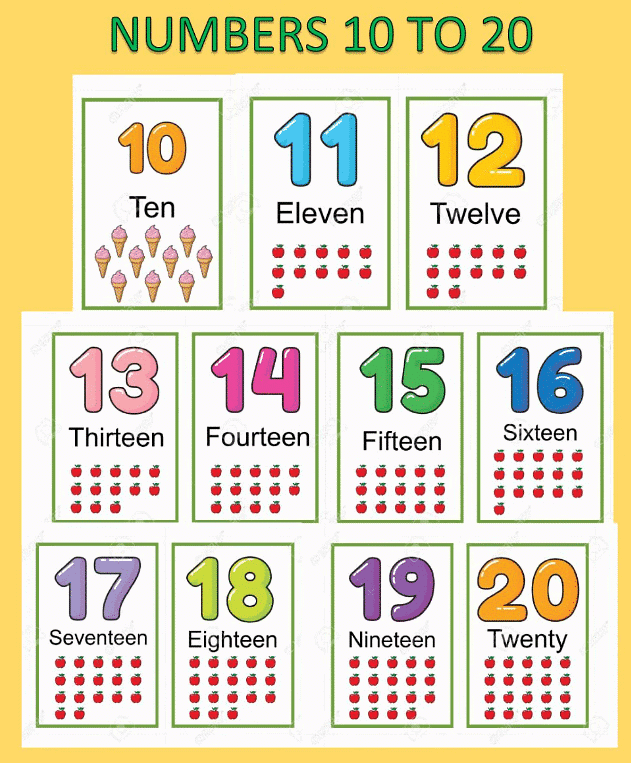
What comes Before, Between, and After a Number?
Read the conversation between Shiv and Amit. Shiv: Today is my birthday and my cousin's birthday too. I am 7 years old and my cousin is 13 years old.
Shiv: Today is my birthday and my cousin's birthday too. I am 7 years old and my cousin is 13 years old.
Amit: Congratulations to both of you! The numbers 8, 9, 10, 11, and 12 lie between 7 (your age) and 13 (your cousin's age).
Shiv: The number 14 comes just after 13 because it is next to 13 (or on the right of 13) in the number sequence. Also because 14 is 1 more than 13.
Amit: The number 12 comes just before 13 because it is on the left of 13 in the number sequence. Also because 12 is 1 less than 13.
Edurev Tips:
- To know a number just after the given number, we count one step forward.
- To know a number just before the given number, we count one step backward.
Example:
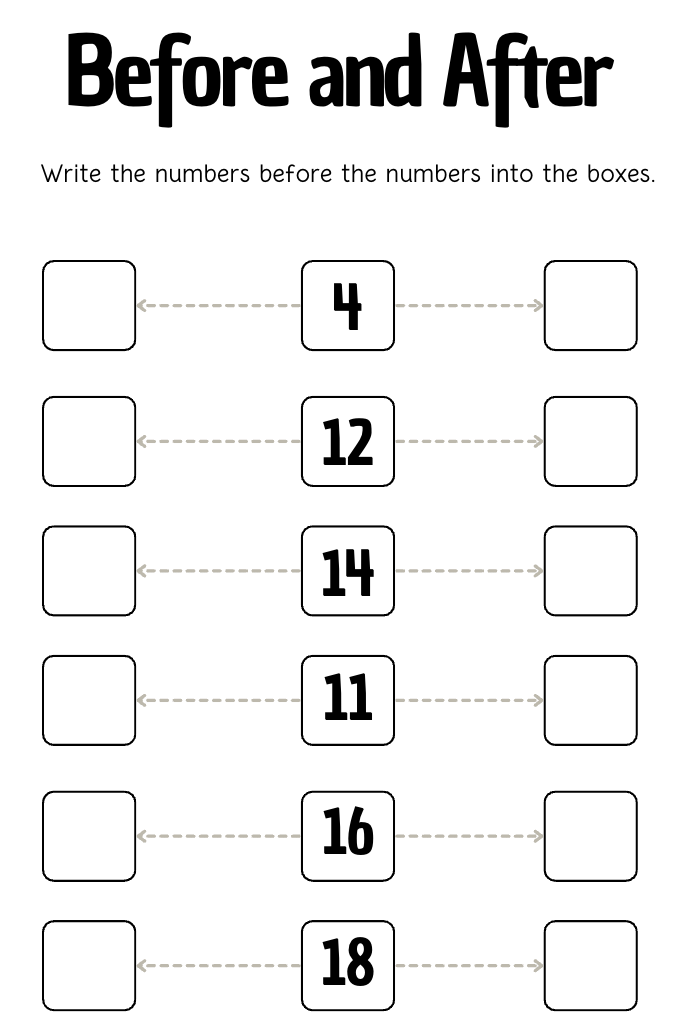
Ans:
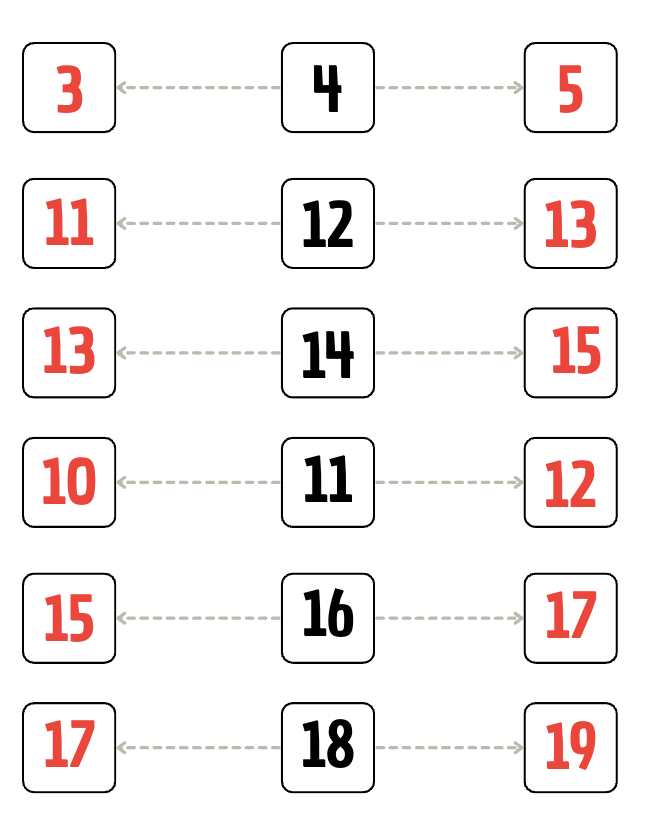
How to Compare the Numbers?
- Imagine you and your friend have balloons. You have 6 balloons, and your friend has 4. Who has more? You do, because 6 is greater than 4!
- Comparing numbers helps us see which is bigger, smaller, or the same. We use words like greater than, smaller than, and equal to to compare. If you have 5 apples and your friend has 5 apples, you both have the same number!
- Let’s explore how we can compare numbers in fun and easy ways!
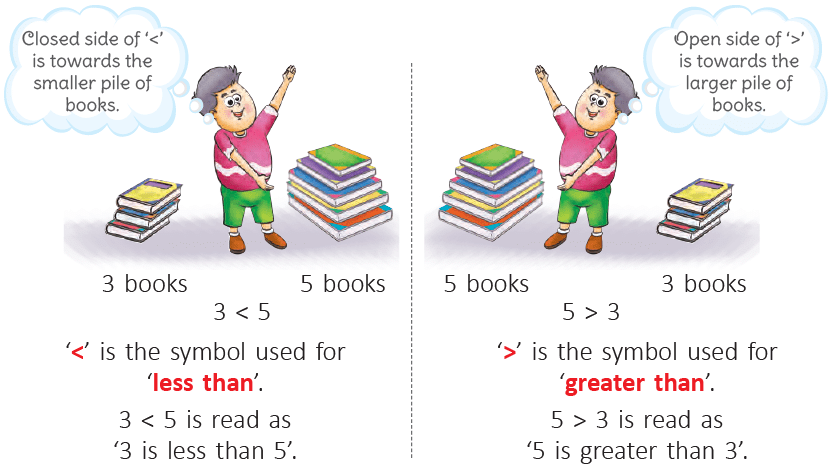
 '=' is the symbol used for 'equal to'.
'=' is the symbol used for 'equal to'.- 3 = 3 is read as '3 is equal to 3'.
- Look at the numbers from 11 to 20 in order.
 The number 13 is to the left of 14. So, 13 < 14.
The number 13 is to the left of 14. So, 13 < 14.
The number 14 is to the right of 13. So, 14 > 13.
Every number is equal to itself. 14 = 14, 15 = 15, 16 = 16, etc.
What are Ascending and Descending Orders?
There are 5 members in the Dubey family— Mr. Dubey, Ms. Dubey, Tina, Rahul, and their pet Rocky.
They are standing height-wise from the tallest to the shortest (in descending order) in picture 1 and from the shortest to the tallest (in ascending order) in picture 2.
In the case of numbers:
- arranging or moving from the greatest number to the smallest number is called the descending order or decreasing order.
- arranging or moving from the smallest number to the greatest number is called the ascending order or increasing order.
For example: The numbers 2, 4, 5, 8, and 9 are in ascending order whereas 9, 8, 5, 4, and 2 are in descending order.
Use of > or < in Forward and Backward Counting
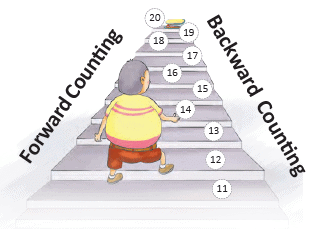
- Jiya starts climbing the stairs from stair number 11. She has to reach stair number 20 to pick her pencil pouch that she dropped over there.
- As she goes up, she counts up (forward) as 11, 12, 13, 14, 15, 16, 17, 18, 19 and 20. While coming back with her pencil pouch, she counts backwards as 20, 19, 18, 17, 16, 15, 14, 13, 12, and 11.
- 11 < 12 < 13 < 14 < 15 < 16 < 17 < 18 < 19 < 20 is the ascending order of the numbers from 11 to 20. 20 > 19 > 18 > 17 > 16 > 15 > 14 > 13 > 12 > 11 is the descending order of the numbers from 20 to 11.
Edurev Tips: Numbers get “bigger/greater” when counting forward and “smaller/ lesser” when counting backwards.
Example:
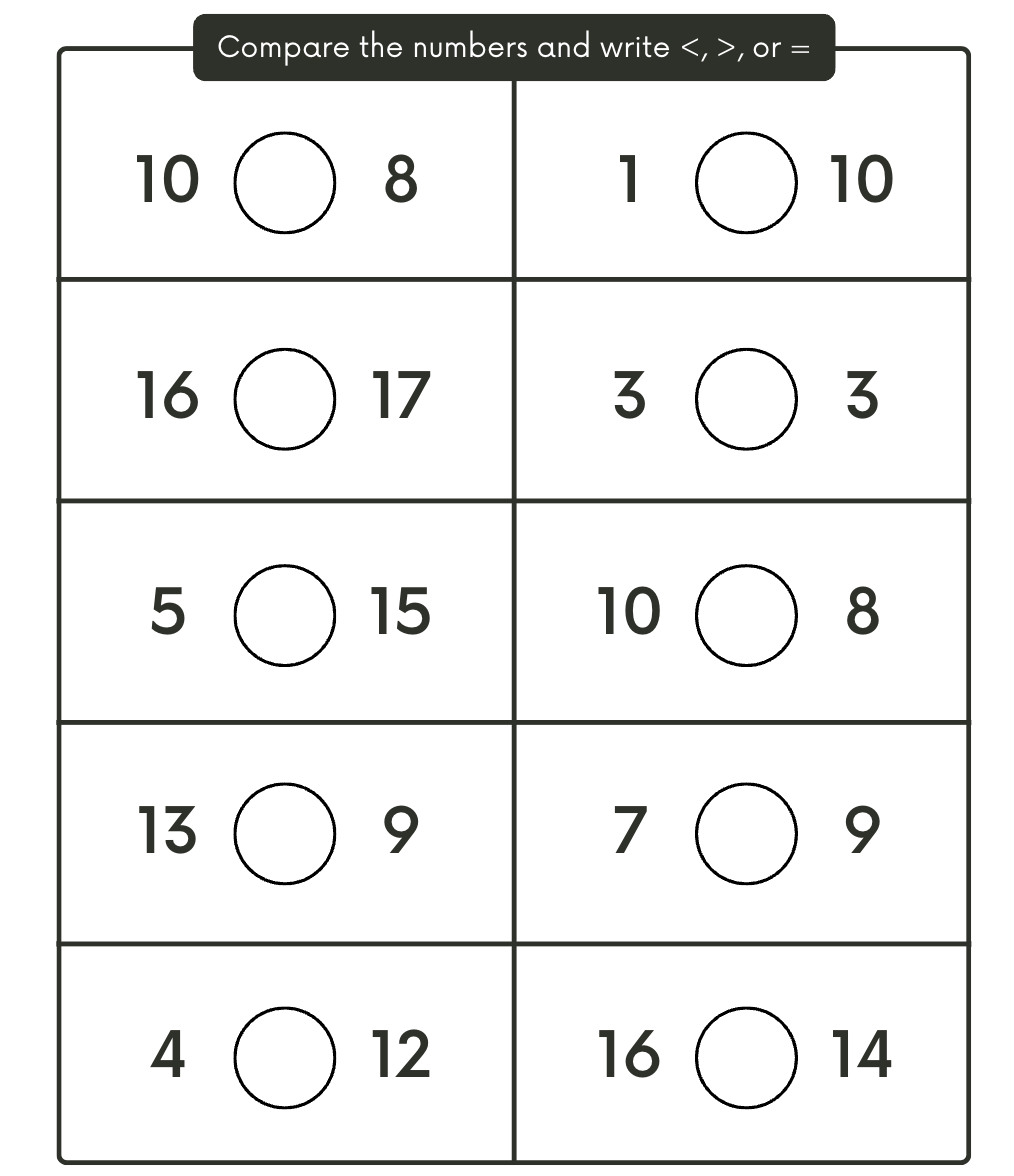
Ans: 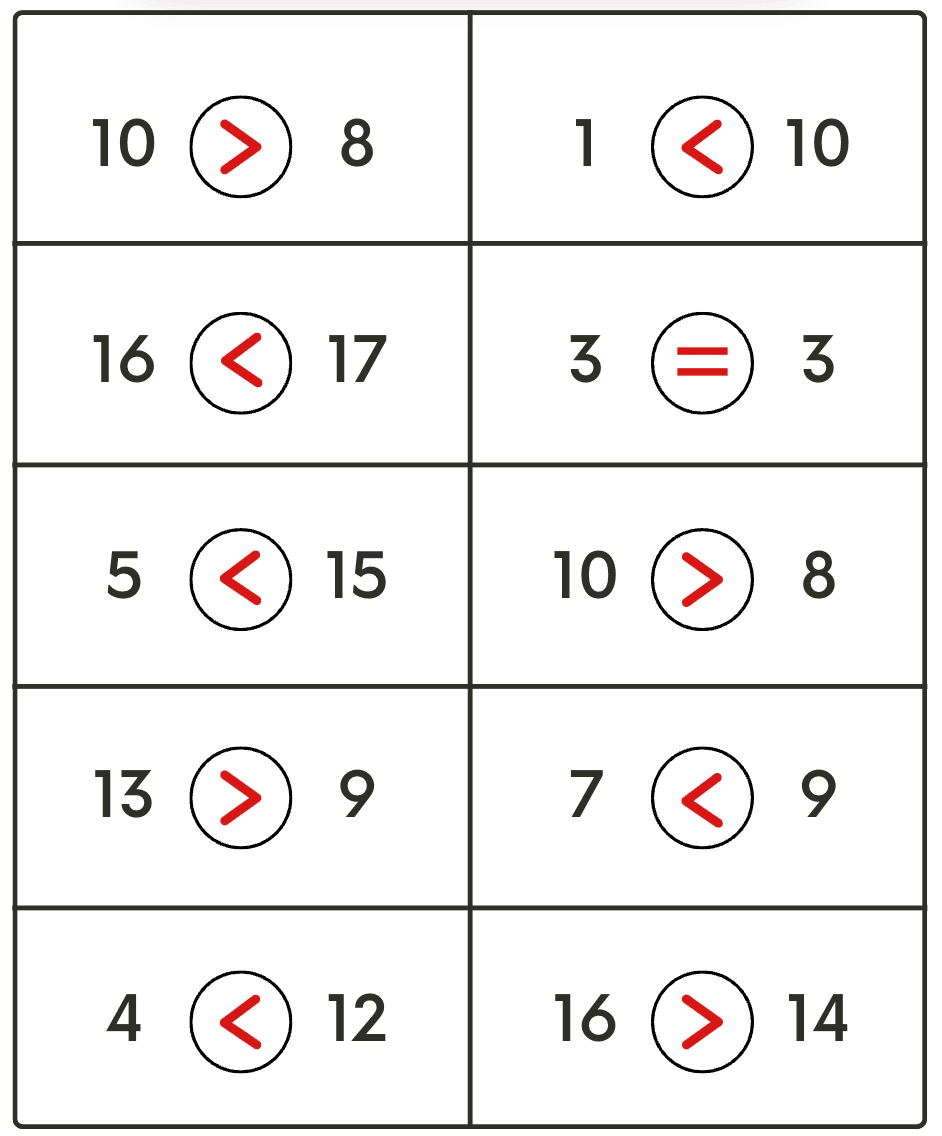
|
15 videos|135 docs|23 tests
|
FAQs on Numbers Class 1 Notes Maths Chapter 11
| 1. What is the significance of the number ten in counting? |  |
| 2. How do you identify the numbers from 11 to 20? |  |
| 3. What does it mean to find numbers that come before, between, and after a specific number? |  |
| 4. How can we compare numbers and what symbols are used for comparison? |  |
| 5. What is the difference between ascending and descending order? |  |

















